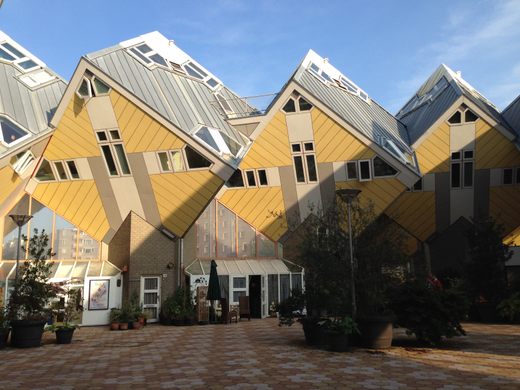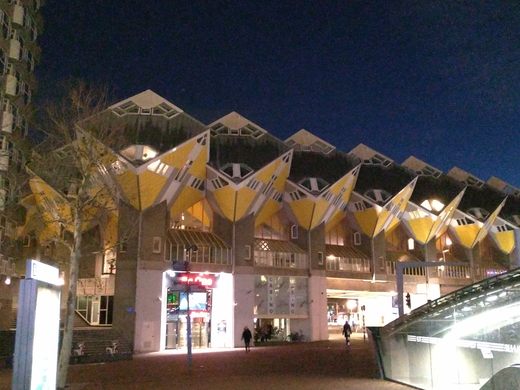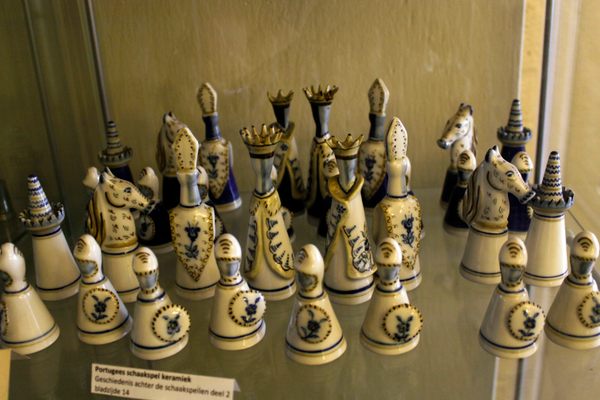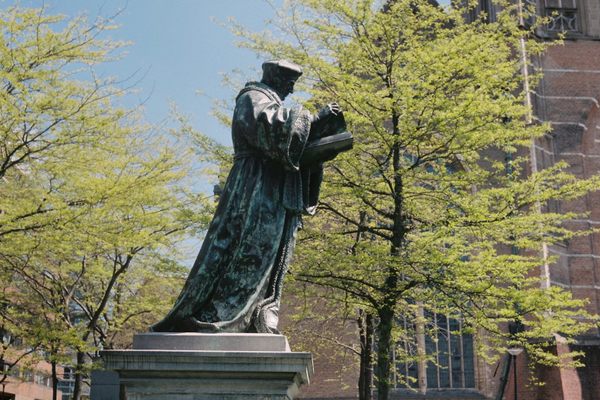Cube Houses
These slanted cubic abodes are a creative if odd solution to a zoning pickle.
Straddled above roads and intertwined amongst themselves, Rotterdam’s string of cube houses, each tilted at an abnormal angle of 55 degrees, have stunned every commuter to ever exit the adjacent Blaak Train Station.
In the 1970s, the city planners of Rotterdam in the Netherlands had a problem. Small pieces of land on both the northwest and southeast sides of Blaak Street were zoned as residential, but they had to be somehow connected. Thinking on its feet, the city consulted architect Piet Blom to devise a way to build a housing complex as a bridge over a road.
Blom’s answer was the Cube House. With 38 regular cube houses and two “super-cubes”, each slanted cubic residence is held up by a hexagonal pillar, some of which are located atop a pedestrian bridge spanning the four-lane Blaak Street. While it solved the urban planning problem, it also created some highly interesting residences in the process.
Living in the cube house is much like an experience on a sailboat. Each cube house contains about 1,080 square feet of floor space. After entering on the ground level, a staircase (which can vary from one flight to three flights, depending on the location of the cube) to reach the first floor, a triangle-shaped room that features a living room, dining area, bathroom, a space often used as an office and a kitchen. A flight of stairs up are two bedrooms and a bathroom, and the top floor is a loft area. Most of the cubes have doors on the second floor that connect to one or two other cubes via a small “terrace”.
Designer Piet Blom created the cube houses as an urban forest, known as the “Blaakse Bos” (the forest on Blaak), with each cube house and it’s pillar forming one “tree”. The homes as a whole are a registered monument of the City of Rotterdam and an unmistakable landmark that represents the more modern spirit of the city itself. The cubes are privately owned by a small and active group of homeowners from the Netherlands as well as Peru, France, the United States and China.
Know Before You Go
In recognition of its unique and eye-catching architecture, one of the cube houses has been converted into a museum, which, for a small fee, is open to the public every day from 11am to 5pm.




































Follow us on Twitter to get the latest on the world's hidden wonders.
Like us on Facebook to get the latest on the world's hidden wonders.
Follow us on Twitter Like us on Facebook